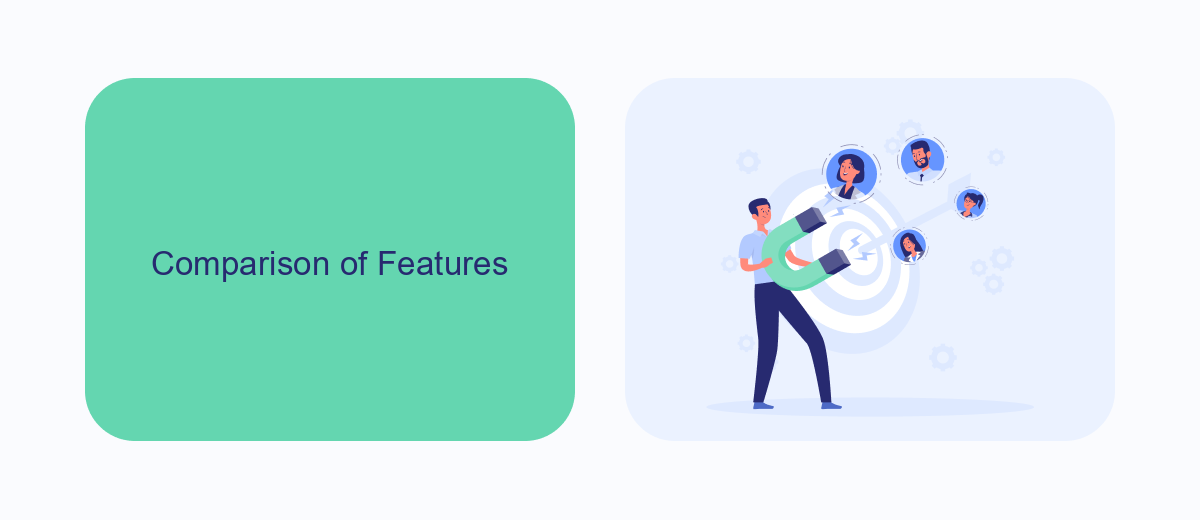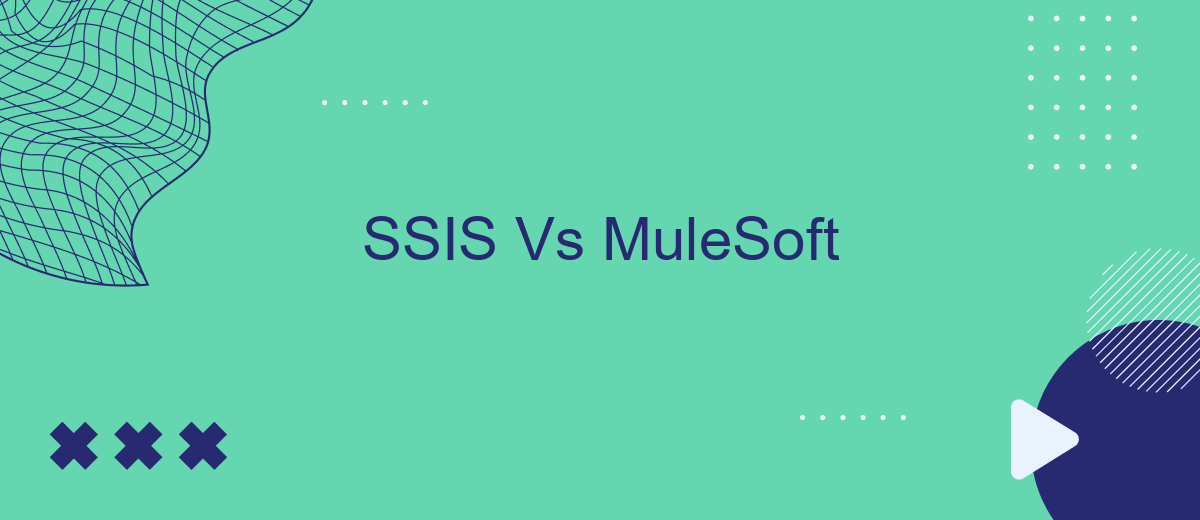When choosing a data integration solution, SSIS (SQL Server Integration Services) and MuleSoft are two prominent options. Both platforms offer unique features and capabilities tailored to different business needs. This article provides a comparative analysis of SSIS and MuleSoft, examining their strengths, weaknesses, and ideal use cases to help you make an informed decision for your organization's data integration requirements.
Introduction
In the world of data integration and management, selecting the right tool is crucial for the success of your projects. SSIS (SQL Server Integration Services) and MuleSoft are two popular options that cater to different integration needs. Understanding their features, strengths, and use cases can help you make an informed decision.
- SSIS: Primarily used for data warehousing and ETL (Extract, Transform, Load) processes within the Microsoft ecosystem.
- MuleSoft: Known for its versatility in connecting a wide range of applications, data, and devices, both on-premises and in the cloud.
- SaveMyLeads: A user-friendly tool designed to automate lead processing and integrate various marketing platforms, enhancing your workflow efficiency.
Both SSIS and MuleSoft offer robust solutions for different integration challenges. While SSIS excels in data-centric tasks within a Microsoft environment, MuleSoft provides a more comprehensive approach to API-led connectivity. Additionally, tools like SaveMyLeads can further streamline your integration processes by automating routine tasks and improving overall productivity.
Comparison of Features

SSIS (SQL Server Integration Services) and MuleSoft are both powerful tools for data integration, but they cater to different needs and use cases. SSIS is a Microsoft product that excels in ETL (Extract, Transform, Load) processes, making it ideal for organizations heavily invested in the Microsoft ecosystem. It offers robust data transformation capabilities and integrates seamlessly with SQL Server and other Microsoft tools. However, SSIS can be complex to set up and requires a deep understanding of SQL and data warehousing concepts.
On the other hand, MuleSoft is a versatile integration platform that supports a wide range of applications, services, and protocols. It is designed for API-led connectivity, making it suitable for modern cloud-based architectures. MuleSoft provides a more user-friendly interface and extensive pre-built connectors, which can significantly speed up the integration process. For businesses looking for a simpler, more automated solution, services like SaveMyLeads can further streamline the integration of various platforms without requiring extensive technical knowledge. This makes MuleSoft a more flexible and accessible option for diverse integration needs.
Pros and Cons

When comparing SSIS and MuleSoft, it's important to consider the advantages and disadvantages of each platform to determine which best suits your integration needs.
- SSIS (SQL Server Integration Services)
- Pros:
- Strong integration with Microsoft products
- Cost-effective for organizations already using SQL Server
- Good performance for ETL operations
- Cons:
- Limited support for non-Microsoft platforms
- Steep learning curve for complex integrations
- Less flexibility in cloud environments
- Pros:
- MuleSoft
- Pros:
- Comprehensive support for a wide range of platforms
- Strong API management capabilities
- Cloud-native and scalable
- Cons:
- Higher cost compared to SSIS
- Requires specialized knowledge for optimal use
- Complex licensing model
- Pros:
Ultimately, the choice between SSIS and MuleSoft depends on your specific requirements and existing infrastructure. For those seeking a more user-friendly solution for setting up integrations, services like SaveMyLeads can simplify the process by offering pre-built connectors and automated workflows, making it easier to integrate various applications without deep technical expertise.
Use Cases

SSIS (SQL Server Integration Services) and MuleSoft are two powerful tools designed to handle data integration, but they serve different use cases. SSIS is primarily used for data warehousing, ETL (Extract, Transform, Load) processes, and data migration within Microsoft environments. It excels in scenarios where data needs to be moved between SQL Server databases and other data stores.
On the other hand, MuleSoft is a versatile integration platform that supports a wide range of use cases, from simple data integration to complex API management and microservices orchestration. MuleSoft is particularly strong in connecting cloud-based applications and services, making it ideal for enterprises looking to create a unified ecosystem of diverse applications.
- SSIS: Ideal for ETL processes, data warehousing, and SQL Server data integration.
- MuleSoft: Best for API management, cloud integration, and microservices orchestration.
- SaveMyLeads: Great for automating lead generation tasks and integrating various marketing tools.
While SSIS is a robust choice for Microsoft-centric environments, MuleSoft offers broader capabilities for integrating a variety of applications and services. SaveMyLeads can complement these tools by automating lead management and enhancing overall workflow efficiency.
Conclusion
In conclusion, both SSIS and MuleSoft offer robust solutions for data integration, each with its own strengths and ideal use cases. SSIS is well-suited for organizations heavily invested in the Microsoft ecosystem, providing a powerful ETL tool that is tightly integrated with SQL Server and other Microsoft services. MuleSoft, on the other hand, excels in environments where diverse and complex integrations are required, offering a versatile platform that supports a wide range of protocols and data formats.
Choosing between SSIS and MuleSoft ultimately depends on your organization's specific needs and existing infrastructure. For those looking for a simpler, no-code solution to streamline their integrations, services like SaveMyLeads can be a valuable addition. SaveMyLeads offers an intuitive platform that automates the process of connecting various applications, making it easier to manage data flows without extensive technical expertise. By leveraging the right tools, businesses can ensure seamless and efficient data integration, driving better decision-making and operational efficiency.
- Automate the work with leads from the Facebook advertising account
- Empower with integrations and instant transfer of leads
- Don't spend money on developers or integrators
- Save time by automating routine tasks
FAQ
What are the primary differences between SSIS and MuleSoft?
Can SSIS and MuleSoft be used together in a single project?
Which tool is better for real-time data integration?
What are the cost implications of using SSIS versus MuleSoft?
Are there any services that can help with the automation and integration setup for these tools?
Don't waste another minute manually transferring leads from Facebook to other systems. SaveMyLeads is a simple and effective tool that will allow you to automate this process so that you don't have to spend time on the routine. Try SaveMyLeads features, make sure that this tool will relieve your employees and after 5 minutes of settings your business will start working faster.

